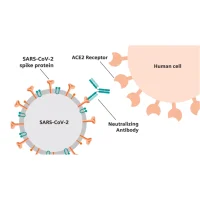Lockdowns and other restrictive measures (e.g. travel curbs) have been imposed by governments as a means to control coronavirus spread in their jurisdictions. New research from Canada provides insights on effective strategies for reopening when the number of cases is on the decline.
You might also like:Containing COVID-19 in EU: Uncoordinated Efforts Don’t Bring Results
Using a simulation model parameterised for the province of Ontario, Canada, the study suggests that decision-makers should prioritise local strategies (county/municipality-level) and ‘phased’ approaches for reopening, as opposed to outright lifting of lockdown for the entire province or state.
The simulation model showed that the county-by-county approach causes fewer days of closure and impacts fewer people than a strategy that opens (or closes) the entire province together. "Our results suggest that plans for reopening economies on the far side of the COVID-19 epidemic curve should consider preceding larger-scale reopenings with local reopenings," the study authors say.
However, for the local or county-by-county approach to be most effective, the criteria for reopening must be well coordinated, the authors note.
In the early stages of an outbreak, cases are few and thus subject to random effects (stochasticity), the authors explained, whereas in the late stages, cases are both stochastic and spatially dispersed across multiple population centres connected through travel.
Based on this principle, the authors developed a spatially structured stochastic model of coronavirus transmission, testing, and school and workplace closure in Ontario. Their study aims to address these key questions:
- Are closures best lifted at the scale of an entire province or on a county-by-county basis?
- Does coordination of testing protocols and reopening criteria between counties improve outcomes?
- How well can a spatially phased approach work in the early stages of the epidemic?
In this study, reopening and reclosing simulations were run over a time horizon of one year and projected the number of cases in each county. To reflect COVID-19 mitigation in Ontario, each simulation began with a 75-day period of province-wide closure applied once 325 confirmed positive cases accumulated in the province.
The next step was to contrast a ‘local strategy’ of reopening and reclosing counties individually, according to a trigger prevalence of confirmed positive COVID-19 cases in the county, to a ‘global strategy’ of province-wide reopening and reclosing, according to a trigger prevalence of confirmed positive COVID-19 cases in the province.
For trigger levels that resulted in the same number of COVID-19 cases between the two strategies, the authors observed that the local strategy caused remarkably fewer person-days of closure, even under high intercounty travel scenarios. "However, both cases and person-days lost to closure rise when county triggers are not coordinated and when testing rates vary among counties," the authors point out.
Another important finding is that local strategies can also do better in the early epidemic stage, but only if testing rates are high and the trigger prevalence is low. Moreover, a phased approach to open or close schools and workplaces, based on ‘trigger’ conditions such as the number of local confirmed positive cases, has been shown to be effective.
"Phased approaches might be temporal in nature, with certain types of workplaces being opened before other types, for instance. Alternatively, a spatially phased approach is also possible, with smaller and/or less densely populated areas being reopened before larger urban centres," according to the authors.
Source: PNAS
Image credit: Lyubov
Ivanova via iStock










